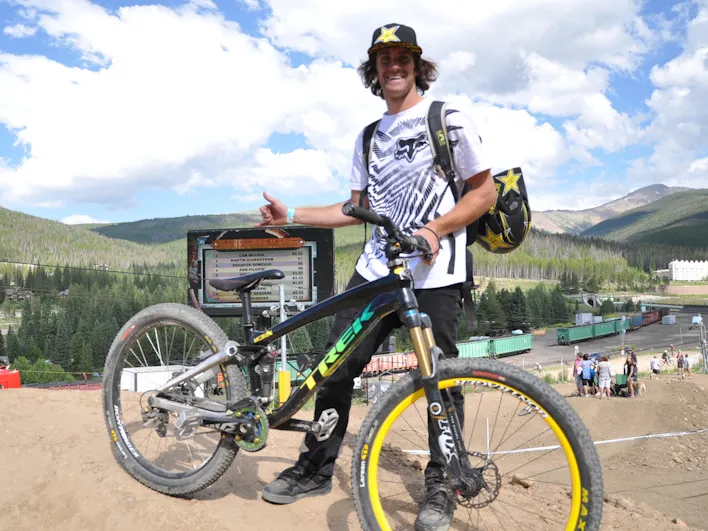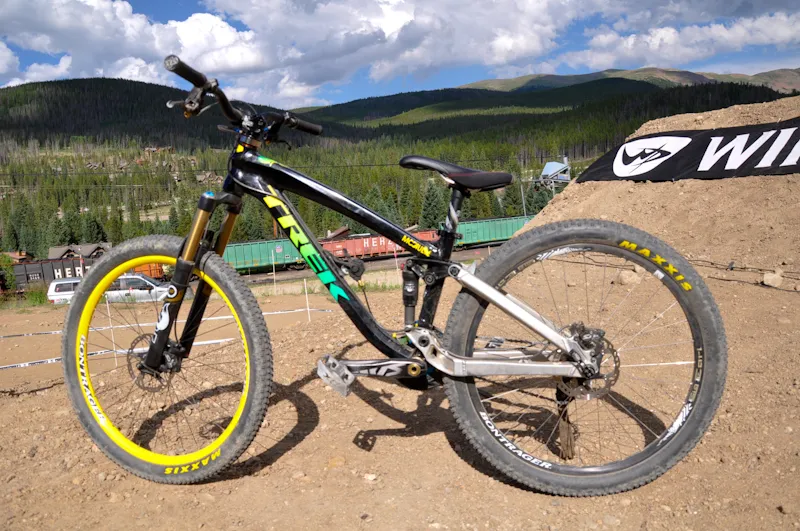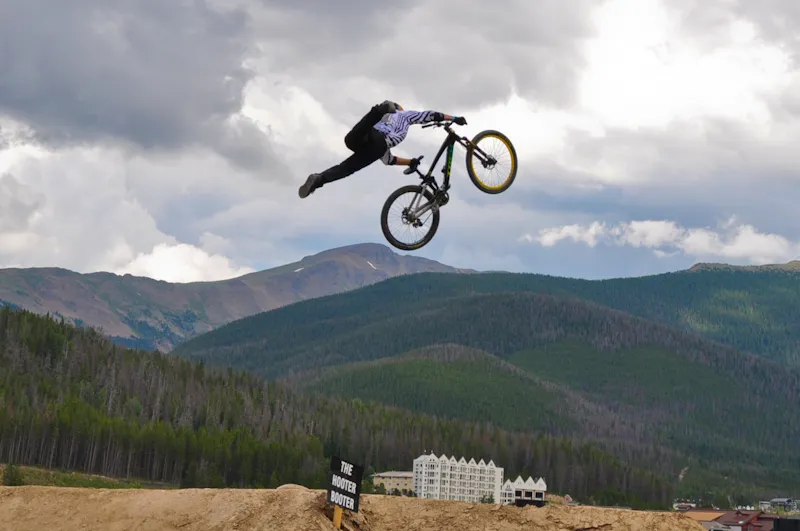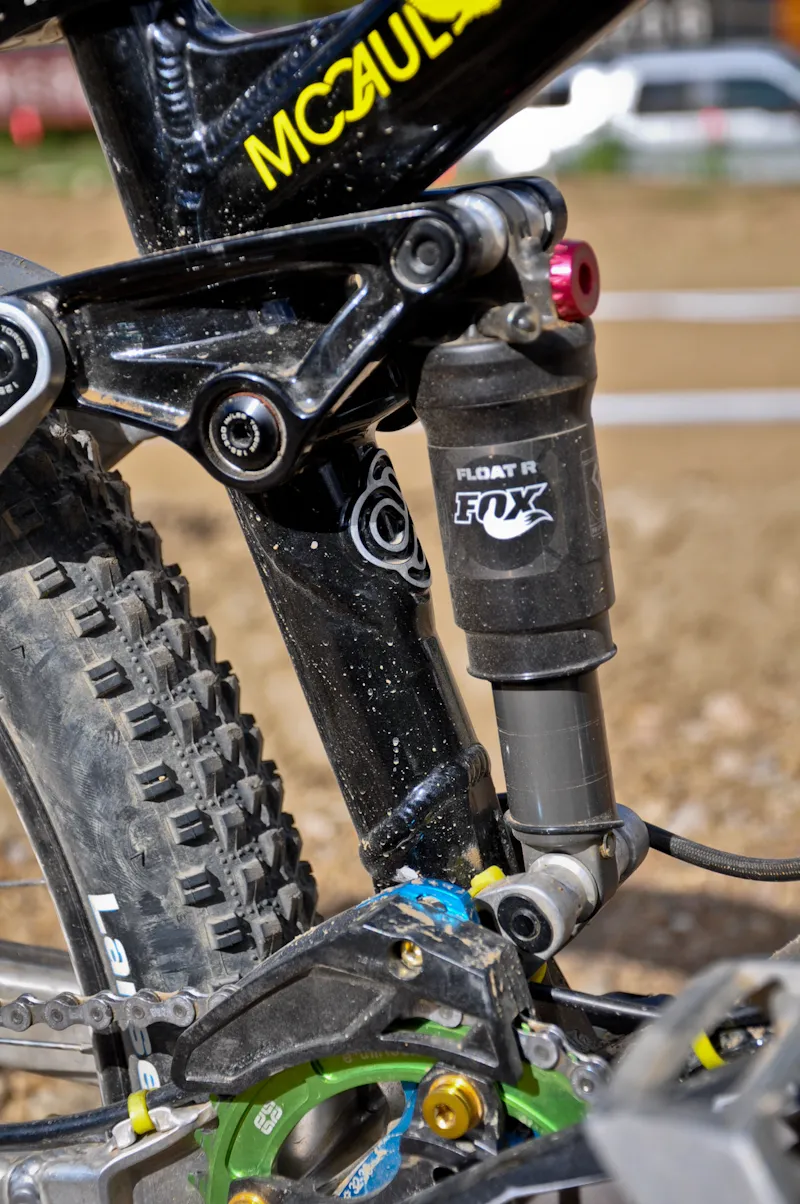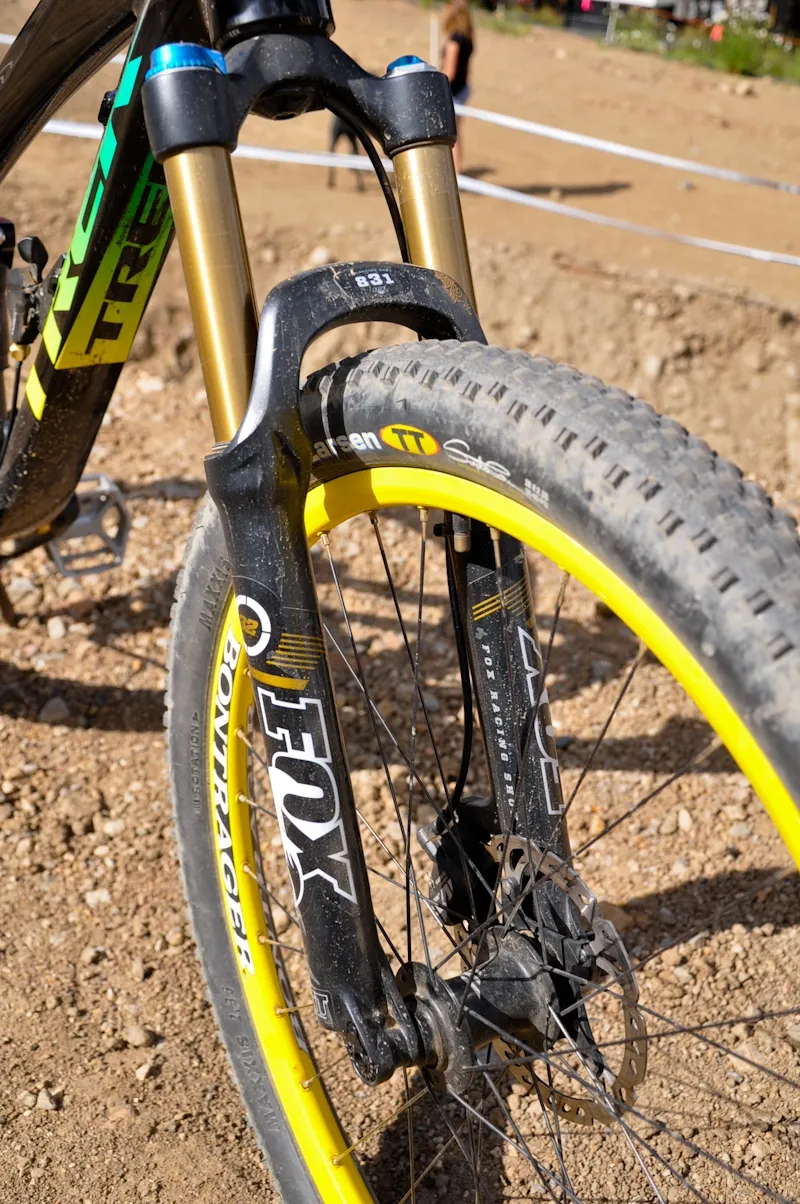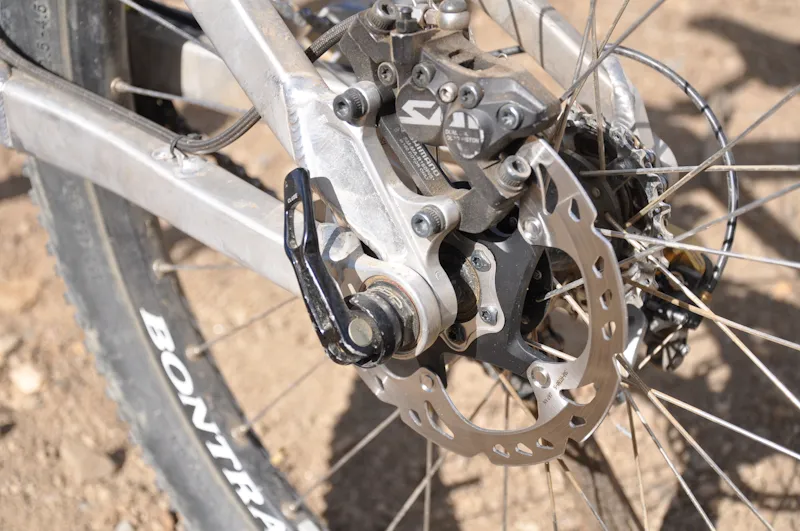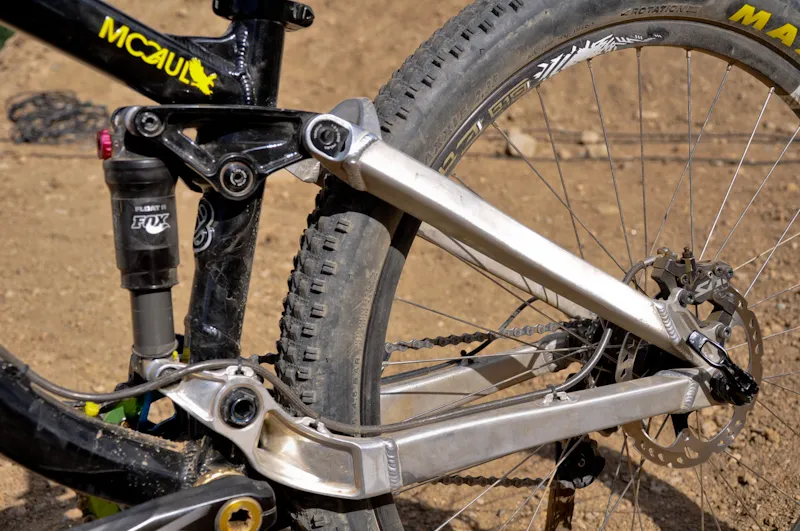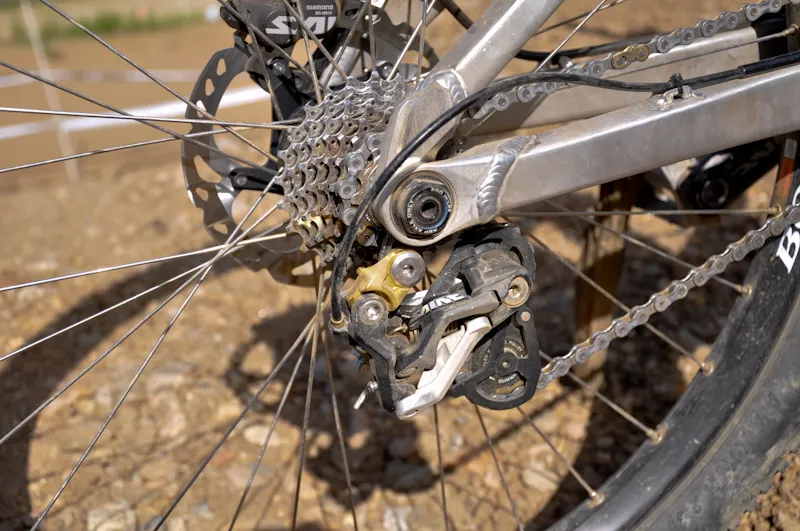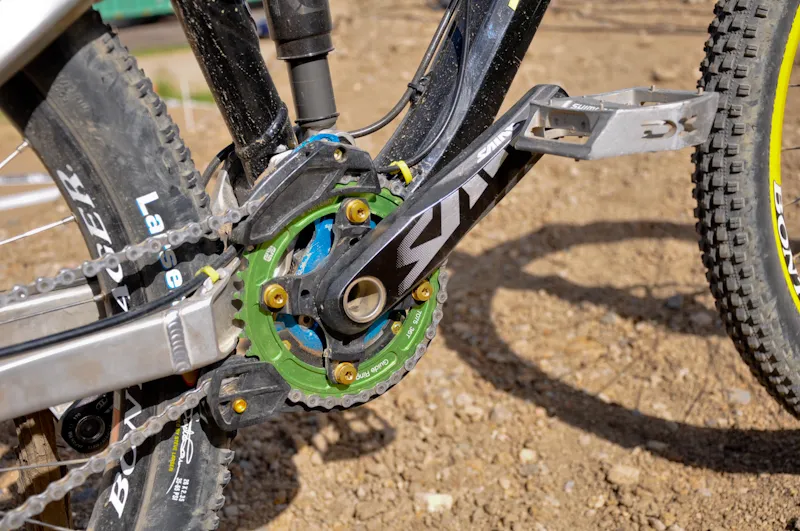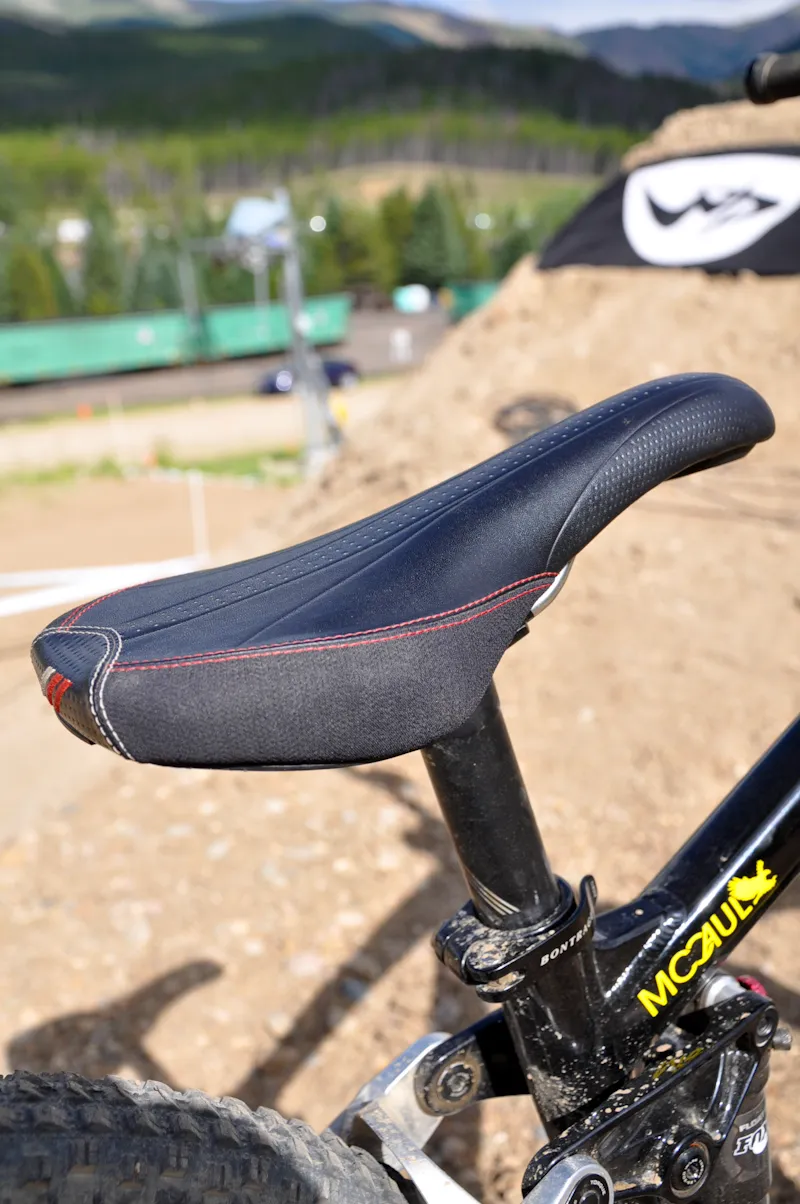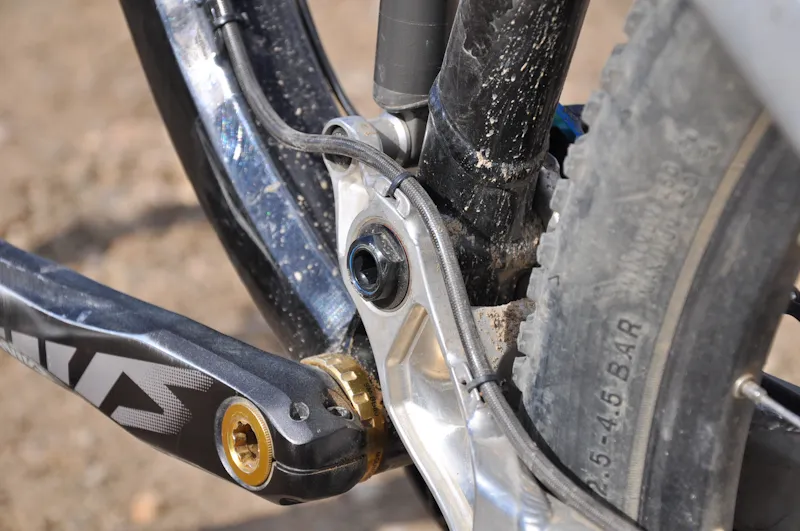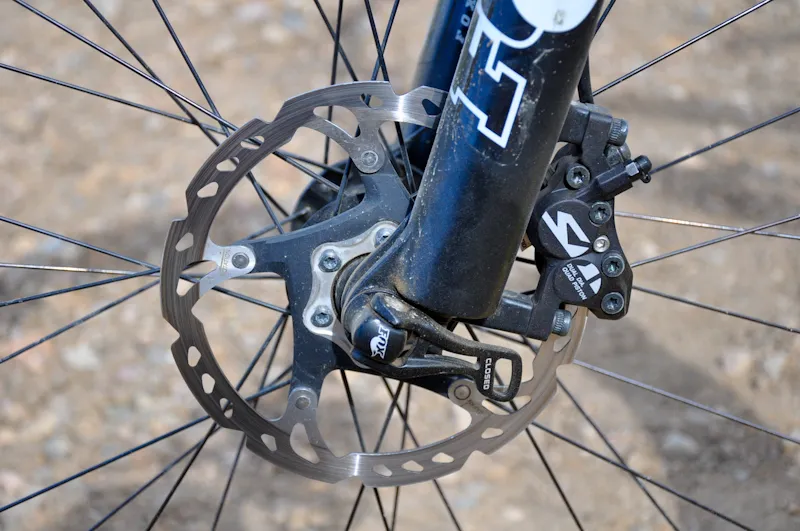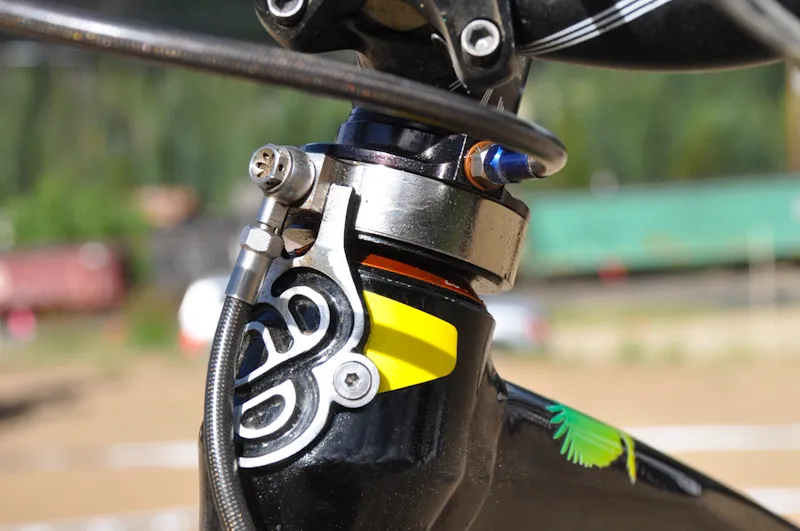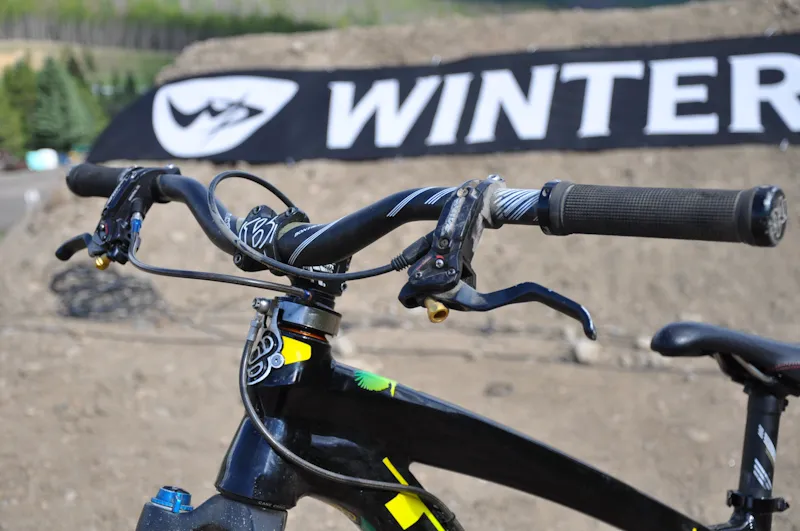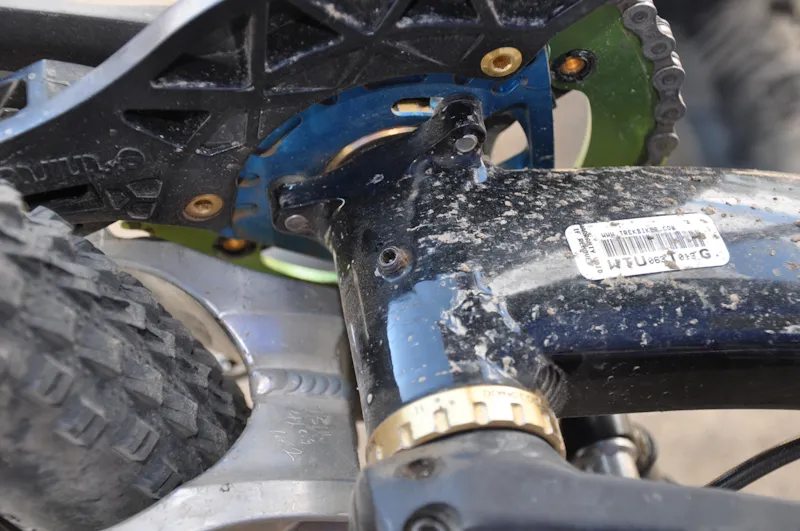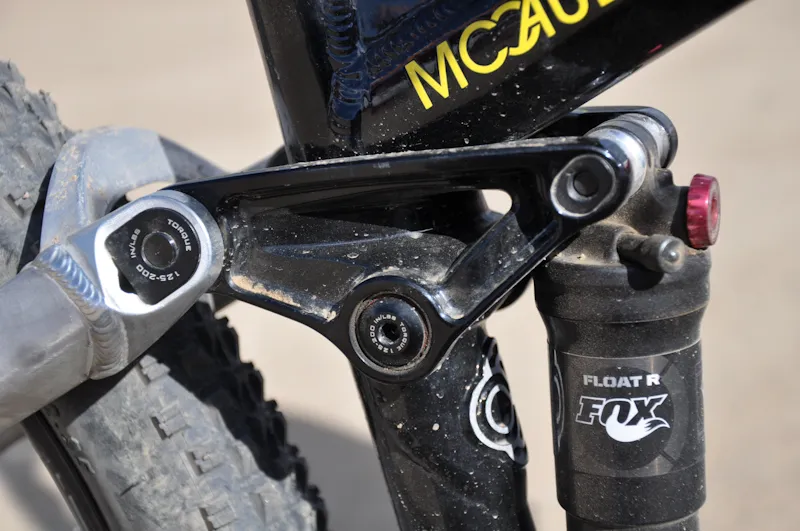For most of us, the back brake is there to slow us down, bring us to a stop or initiate the occasional rear wheel drift to impress friends. Cam McCaul, winner of this year's Crankworx Colorado Slopestyle, has a different use for his: front flips.
“I use it to initiate the rotation off the lip, which kicks the bike forward a tiny bit and locks up the cranks, giving a good platform to push off of to get my body weight over the bike,” he told BikeRadar. With such a different take on what a bike’s abilities should be, we decided to take a closer look at McCaul’s custom Trek Slope prototype.
“The bikes we used to use were Frankenstein bikes so this is the first one that’s totally its own bike. It’s also the first Full Floater slopestyle bike, too," said McCaul, referring to the proprietary dual-link suspension design already used on bikes like the Trek Remedy, Fuel EX and Top Fuel.
According to Trek R&D engineer Ted Alsop, McCaul’s bike is one of only five in existence. “Cam and Brandon [Semenuk] each have one, we have the two original prototypes in Waterloo, and we just sent Anneke Beeren one to race four-cross on," he said.
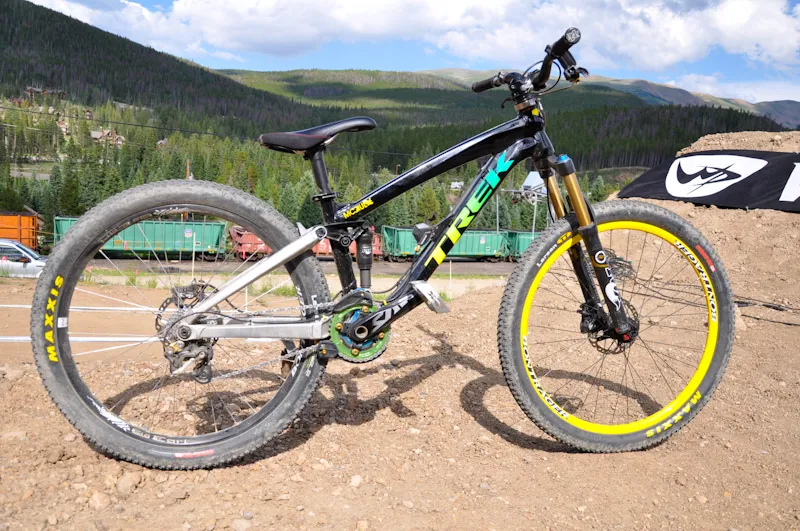
Cam McCaul's slopestyle rig is one of only five Trek Slopes in existence
The frames are built by Trek’s Advanced Concept Group at the company's headquarters in Waterloo, Wisconsin using a mix of production and custom CNC parts. “We use tubing used in the Session, Scratch and Remedy, and custom-build the rocker links, their pivots, the chainstay and seatstay yokes, and the bottom brackets,” Alsop said.
Design-wise the Slope has incredibly short 15.75in chainstays, more progressive rear suspension than any other bike in the Trek line and a very low standover height. As for geometry, the Slope mimics that of Trek’s Long Ticket hardtail, which helps McCaul and Semenuk switch back and forth between the two bikes.
To withstand the harsh landings secondary to huge air, McCaul gives the Slope's suspension an even more progressive feel by running a specially-valved Fox Float R shock that has the slightest bit of plushness on the top end of the stroke but ramps up very quickly. This complements his Fox 831 fork up front, which he says is “plenty progressive and adjustable, bone-stock”.
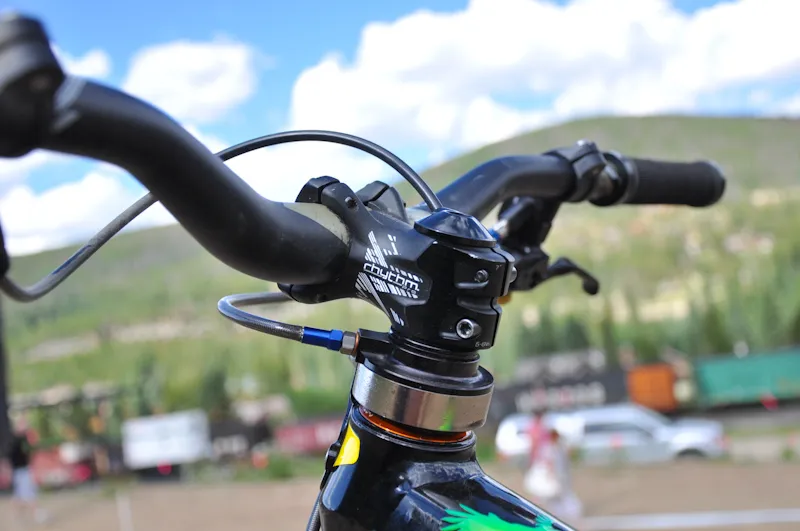
A hollow top cap bolt and prototype Straitline gyro allow McCaul to pull barspins unhindered by the brake hoses
McCaul’s ability to do endless bar-spins and tail-whips is thanks to several modifications. To take care of the brake housing, a Pott's Mod-style top cap allows the front hydraulic housing to snake through the fork’s steerer tube and directly down to the front caliper, bypassing any interference from the frame.
A prototype Straitline gyro is used for the rear brake housing; McCaul says this should be making its way to production soon. “The last generation prototype worked well, but usually needed new seals after each contest. I’ve had this one since June and it hasn’t needed new seals yet.” he said.
To keep the shifter housing out of the way, McCaul uses a custom mount for his stock Shimano Saint rear shifter, attaching it to the down tube via water bottle bosses. “I’ve been running the shifter on the down tube since ’06," he said. "It’s pretty much a ‘shift it and forget it’ design, which works well for slopestyle. I usually take a run or two to figure out gearing, then leave it in that gear for the weekend.”
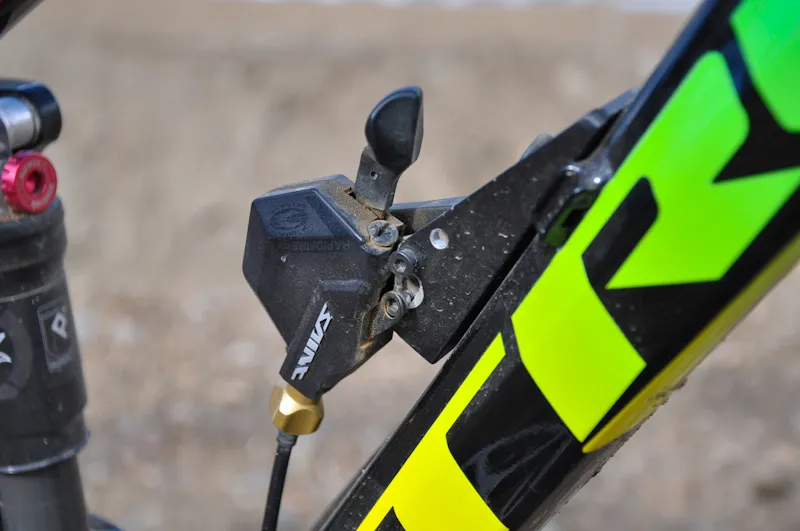
A Shimano Saint shifter mounted on the down tube helps keep the cockpit clear of cables
Another modification that’ll make the average cyclist cringe is a one-off bottom bracket retainer. With a small bolt threaded through the Slope’s bottom bracket shell, McCaul can increase or decrease spindle friction in order to keep his pedals in place for tricks like Superman backflips.
Between the bolt and the spindle is a flat piece of rubber, which is said to be a little thicker than a standard inner tube. “We used to run a brass bolt straight onto the spindle, but the feel was too inconsistent. This new setup is much better,” McCaul said.
As of right now, there are no current plans for Trek to make a production Slope. But if McCaul, Semenuk and the R&D crew making the bike have their way, that’ll hopefully soon change.
Complete bike specifications
- Frame: Trek Slope prototype, 100mm travel
- Rear shock: Fox Float R with custom valving
- Fork: Fox 32 831 RL, 130mm,15QR
- Headset: Cane Creek
- Stem: Bontrager Rhythm Pro, 50mm
- Handlebar: Bontrager Rhythm Pro, 711mm
- Grips: Bontrager lock-ons
- Front brake: Shimano Saint, 160mm Ice Tech disc
- Rear brake: Shimano Saint, 160mm Ice Tech disc
- Brake levers: Shimano Saint
- Chain device: E*thirteen LG1
- Rear derailleur: Shimano Saint, short cage
- Shift lever: Shimano Saint
- Cassette: Shimano Ultegra, 12-25T, 10-speed
- Chain: Shimano 6600
- Crankset: Shimano Saint, 170mm, e*thirteen 36T chainring
- Bottom bracket: Shimano Saint
- Pedals: Shimano DX
- Rims: Bontrager Big Earl rear, Rhythm Pro front
- Front hub: Bontrager Rhythm Pro, 32-hole
- Rear hub: Bontrager Rhythm Pro, 32-hole
- Spokes: Unknown, two-cross front and rear
- Front tire: Maxxis Larsen TT Max Pro 60a, 26x2.35in
- Rear tire: Maxxis Larsen TT Max Pro 60a, 26x2.35in
- Saddle: Bontrager Rhythm Pro
- Seatpost: Bontrager Rhythm Pro
- Other accessories: Straitline gyro prototype
Critical measurements:
- Rider's height: 1.73m (5ft 8in)
- Rider's weight: 72.57kg (160lb)
- Seat tube length, c-t: 330mm
- Seat tube length, c-c: 290mm
- Top tube length: 600mm
- Bottom bracket height: 337mm
- Head tube angle: 67.5 degrees
